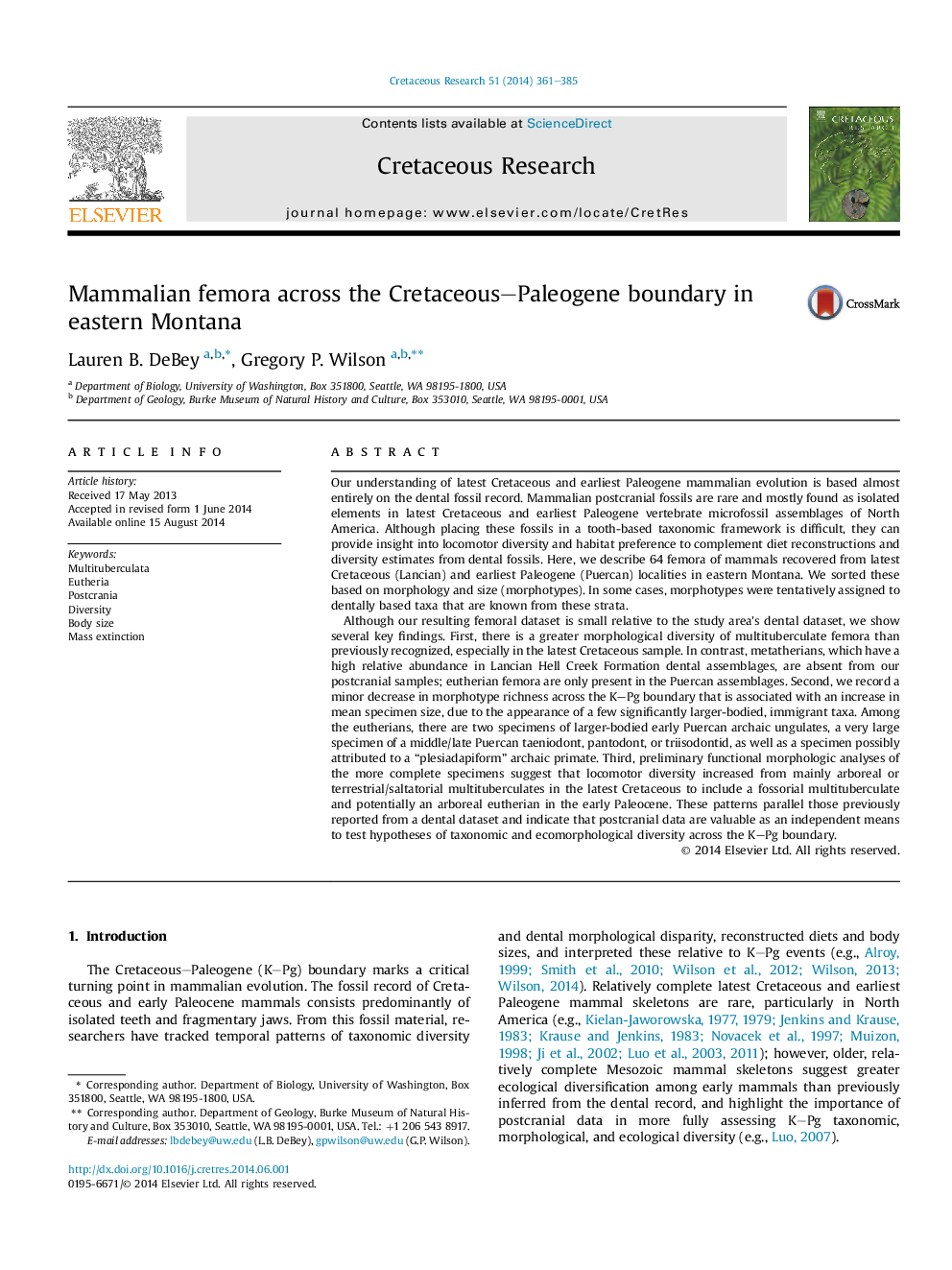| کد مقاله | کد نشریه | سال انتشار | مقاله انگلیسی | نسخه تمام متن |
|---|---|---|---|---|
| 4747051 | 1642071 | 2014 | 25 صفحه PDF | دانلود رایگان |
• We investigate femora diversity across the K–Pg boundary in eastern Montana.
• The latest Cretaceous assemblage comprises small multituberculates.
• Paleocene immigrant taxa increased first mean specimen size then, maximum size.
• Paleocene taxa include archaic ungulates, a large taxon, and a possible primate.
• We preliminarily suggest locomotor diversity expanded across the K–Pg boundary.
Our understanding of latest Cretaceous and earliest Paleogene mammalian evolution is based almost entirely on the dental fossil record. Mammalian postcranial fossils are rare and mostly found as isolated elements in latest Cretaceous and earliest Paleogene vertebrate microfossil assemblages of North America. Although placing these fossils in a tooth-based taxonomic framework is difficult, they can provide insight into locomotor diversity and habitat preference to complement diet reconstructions and diversity estimates from dental fossils. Here, we describe 64 femora of mammals recovered from latest Cretaceous (Lancian) and earliest Paleogene (Puercan) localities in eastern Montana. We sorted these based on morphology and size (morphotypes). In some cases, morphotypes were tentatively assigned to dentally based taxa that are known from these strata.Although our resulting femoral dataset is small relative to the study area's dental dataset, we show several key findings. First, there is a greater morphological diversity of multituberculate femora than previously recognized, especially in the latest Cretaceous sample. In contrast, metatherians, which have a high relative abundance in Lancian Hell Creek Formation dental assemblages, are absent from our postcranial samples; eutherian femora are only present in the Puercan assemblages. Second, we record a minor decrease in morphotype richness across the K–Pg boundary that is associated with an increase in mean specimen size, due to the appearance of a few significantly larger-bodied, immigrant taxa. Among the eutherians, there are two specimens of larger-bodied early Puercan archaic ungulates, a very large specimen of a middle/late Puercan taeniodont, pantodont, or triisodontid, as well as a specimen possibly attributed to a “plesiadapiform” archaic primate. Third, preliminary functional morphologic analyses of the more complete specimens suggest that locomotor diversity increased from mainly arboreal or terrestrial/saltatorial multituberculates in the latest Cretaceous to include a fossorial multituberculate and potentially an arboreal eutherian in the early Paleocene. These patterns parallel those previously reported from a dental dataset and indicate that postcranial data are valuable as an independent means to test hypotheses of taxonomic and ecomorphological diversity across the K–Pg boundary.
Journal: Cretaceous Research - Volume 51, September 2014, Pages 361–385
